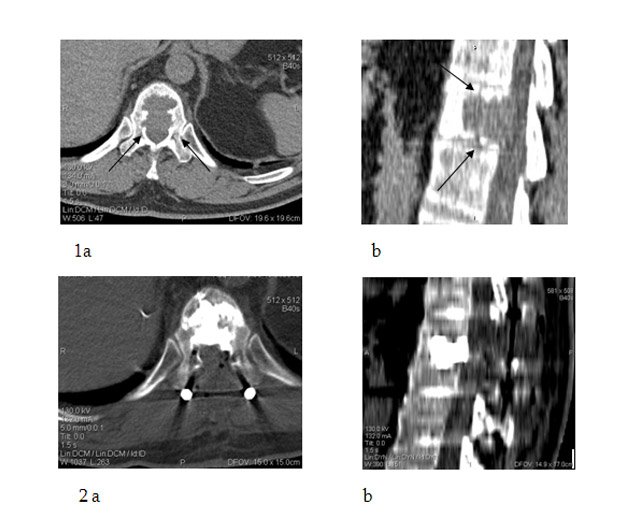A. Hakobyan, MD PhD
Yerevan 2013
Full text in journal “Medical Bulletin”
Prevention of compression fractures and recovery of motor function of the spine in the case of vertebral body metastasis with reduction of height (50%) or more with lysis of posterior part of vertebral body is a highly topical issue. Patients with neoplastic diseases, particularly in the case of metastasis, quickly lose their ability to work and become disabled because of the fracture of the vertebral body and spinal cord compression. In this case neither vertebroplasty nor only transpediculiar fixation is effective. So we prepared combination of those two methods during the surgery.
The combination of methods allows to restore function of vertebral body. During the surgery the decompressive laminectomy was performed, which also prevented the spinal cord compression.

Fig. 1 Pre-operative CT images, which shows metastasis of thoratic XI vertebra with lysis of vertebral body posterior part
Fig. 2 CT of the same patient after the surgery. The metastasis was injected by bone cement and only transpedicular fixation was done
After it transpediculiar fixation was done and in metastatic lesions of vertebral body was injected bone cement.
We have operated on 8 patients in our department. In all cases patients had spine metastasis with vertebral body lysis more than 50% of body height and lysis of posterior part of vertebral body. All patients were discharged from hospital after 7-10 days.
Either transpediculiar fixation or vertebroplasty was not an effective one, because each of them couldn’t prevent spine fractures in these cases. So the combination of those methods makes the surgery more effective.


